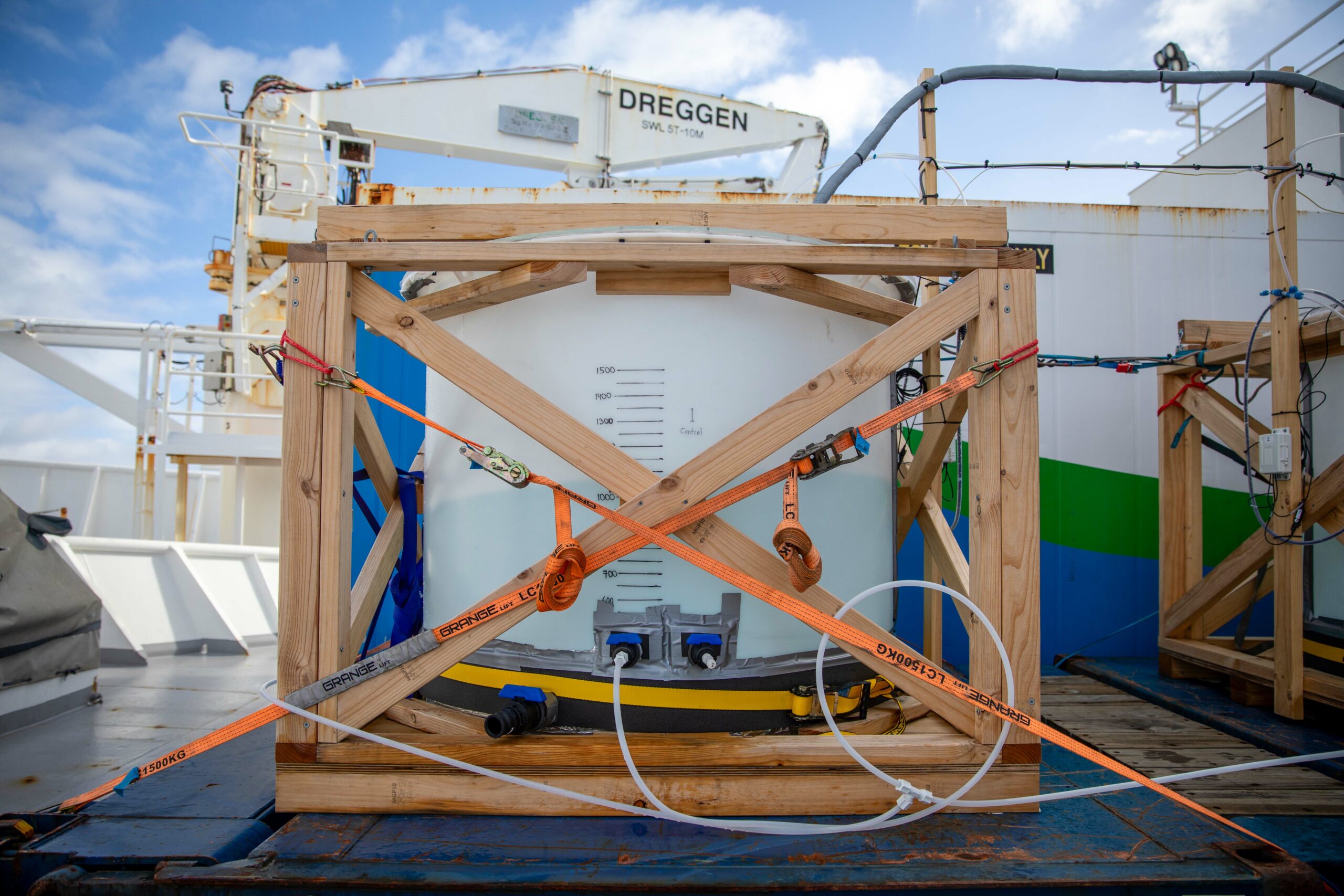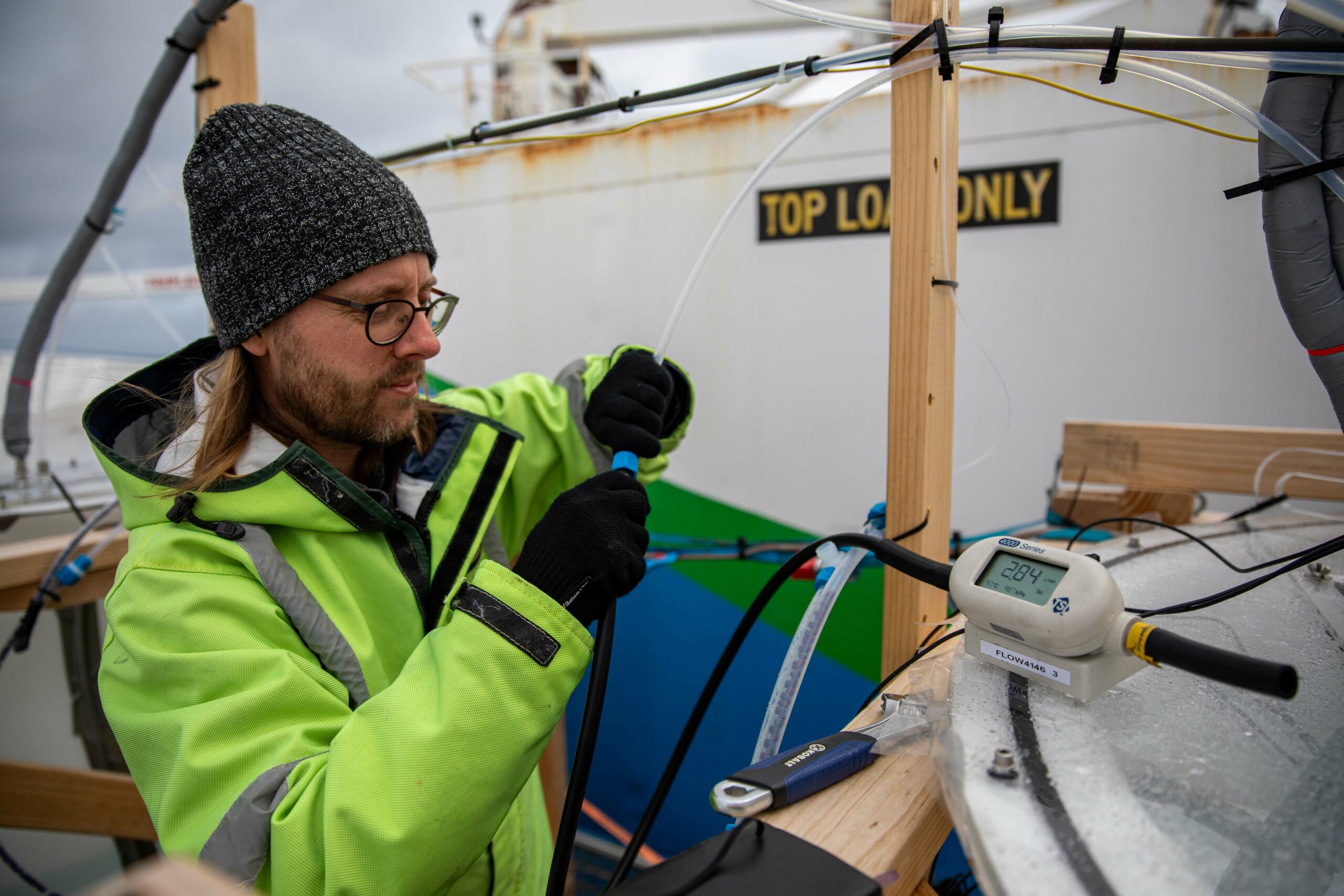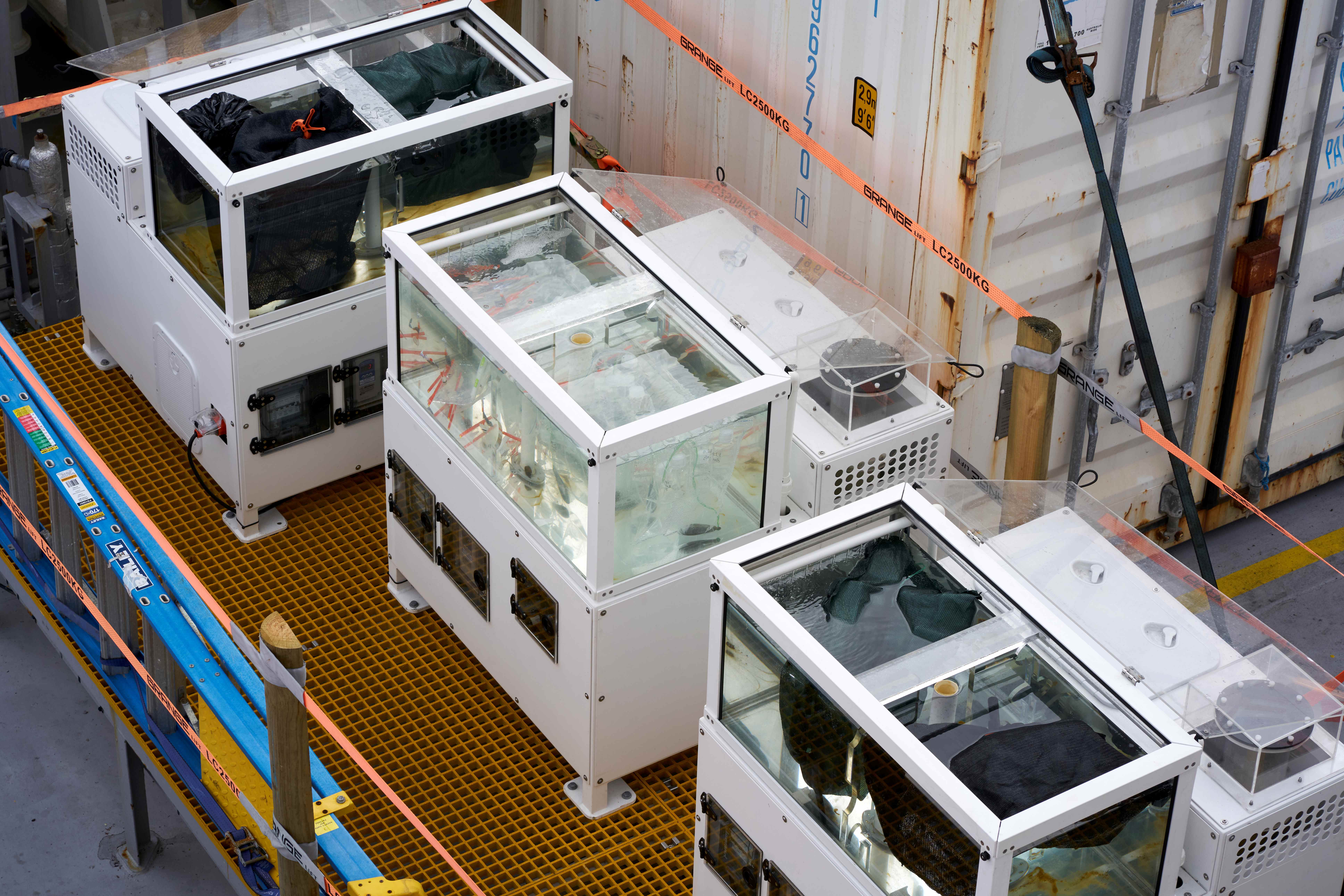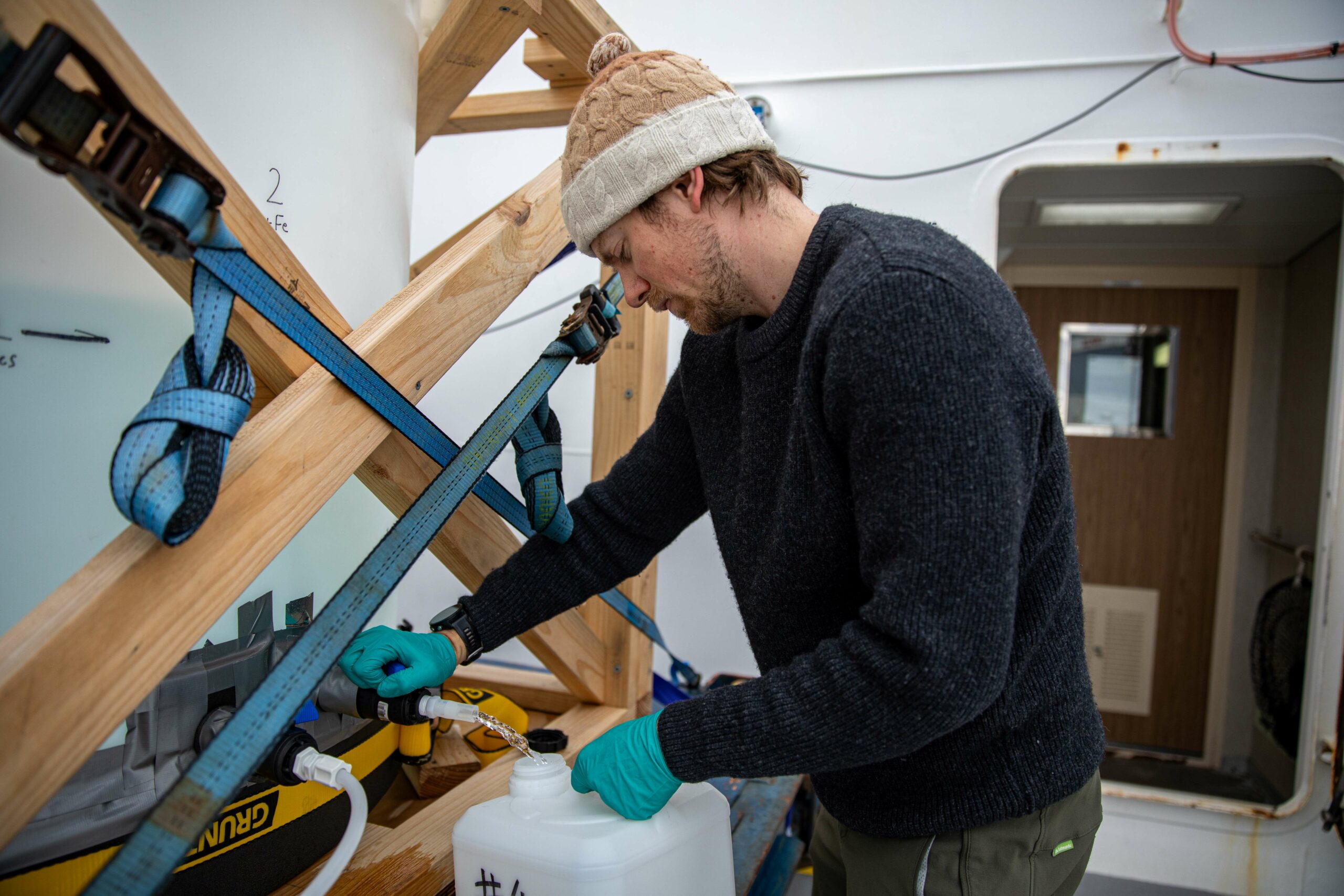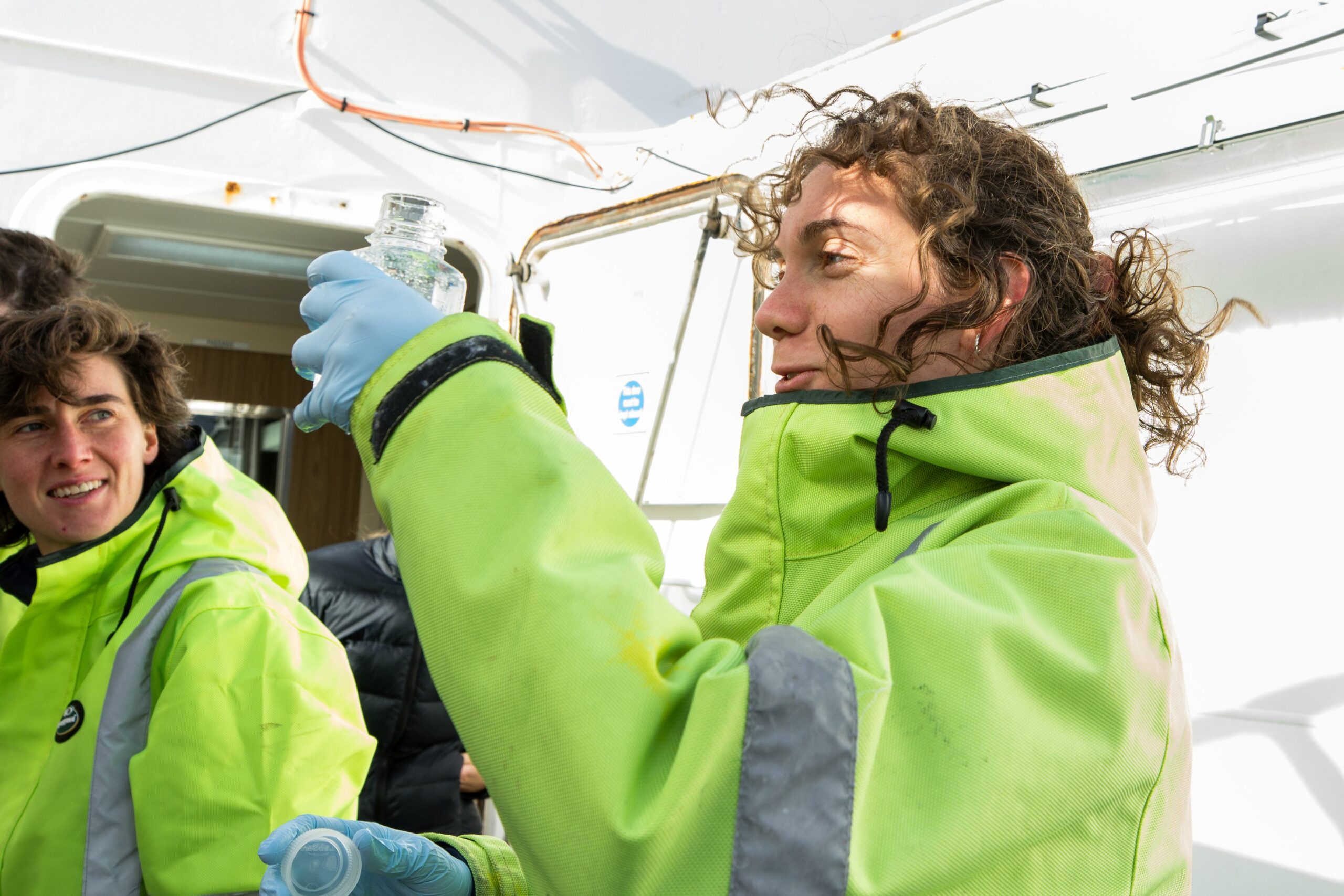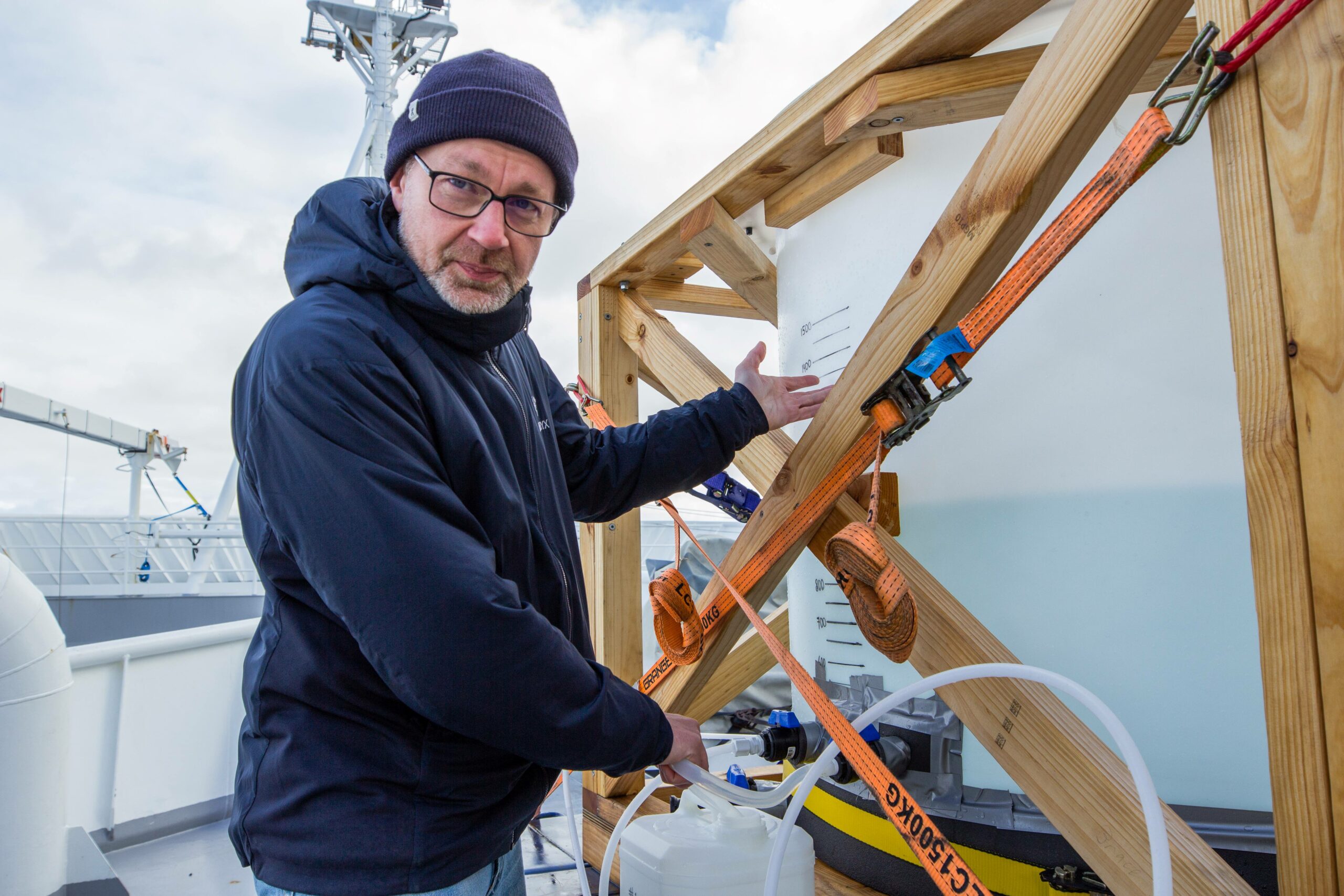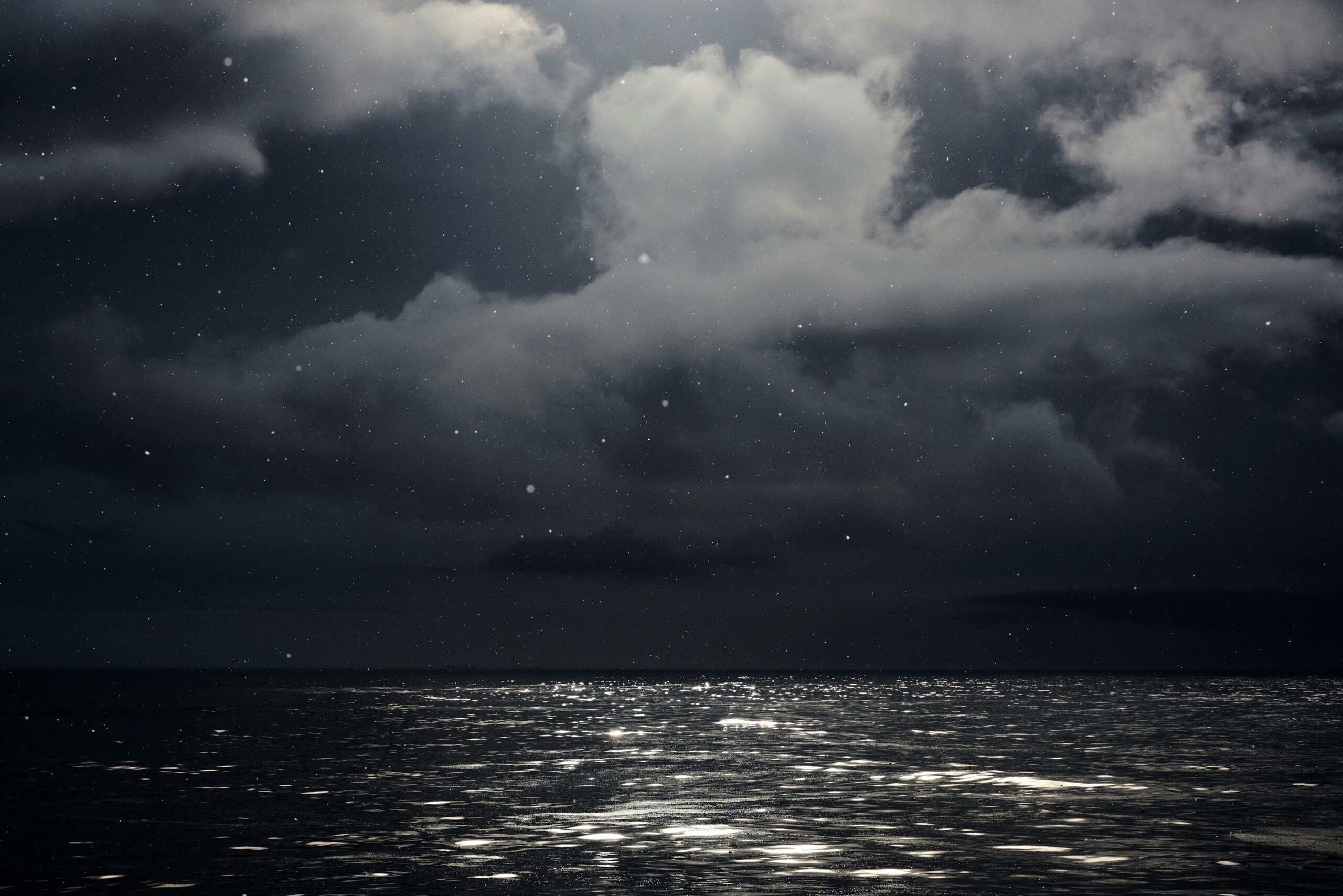‘MISO-cosms’: a miso soup unlike any other
by Pauline Latour, Joel Alroe, Anita Butterley, Marc Mallet, Brandon McNabb, Talitha Nelson and Robert F. Strzepek
We’re currently down in the furious fifties on the MISO voyage, travelling on CSIRO research vessel (RV) Investigator to study ongoing changes in the Southern Ocean. Within our biology team, we have a particular interest in phytoplankton, single-cell plant-like organisms living in the surface ocean.
Around the globe, phytoplankton play key roles in the Earth system. Through photosynthesis, they transfer carbon dioxide from the atmosphere into the ocean. In addition, these tiny (and incredibly beautiful!) organisms produce over 60% of the oxygen that we breathe, and constitute the base of most oceanic food webs.
But despite such essential roles, there are still many unknowns about phytoplankton.

In the remote ocean surrounding the Antarctic continent, phytoplankton growth is limited by low concentrations of trace metals, especially iron – an essential element for all life on Earth. Even though we’ve known this for the past couple of decades, the effects of iron limitation on Southern Ocean phytoplankton and primary productivity are still not well understood. Among the many mysteries related to Southern Ocean phytoplankton is that we don’t really know how communities evolve during a bloom (that is, a large growth event), and how iron limitation impacts this.
We also know that Southern Ocean phytoplankton play a key role in the formation of clouds. Globally, phytoplankton and bacteria produce dimethyl sulfide (or ‘DMS’) as a by-product of their growth and lifecycle. However, what’s different in the Southern Ocean is that many of the particles needed to form the water droplets in clouds are formed from this DMS and other gases. Understanding the process of cloud formation is essential, as this impacts how much solar radiation reaches the Earth and hence global climate.

A big challenge in understanding the role of biology in cloud formation is relating the gases measured in the atmosphere to the species of phytoplankton producing them. To overcome this challenge, during the MISO voyage we have taken a small parcel of the Southern Ocean and put it into two 2000-litre tanks on the deck of the ship.
These custom-made tanks (known as ‘mesocosms’, or experimental systems that examine the natural environment under controlled conditions) are special because they have sealed lids that allow us to directly measure the gases released by the phytoplankton growing in the water inside.

These ‘MISO-cosm’ tanks also allow us to track the biota over time. We’re using a huge range of tools to measure the DNA, RNA, proteins and pigment composition of various types and sizes of phytoplankton, viruses, bacteria and zooplankton. Thanks to the large volume of these mesocosms, we can study changes day after day.
But that’s not all we do! To understand the state of this mini-scale community, we measure a whole range of chemical and physiological parameters (e.g., macronutrient and trace metals, photosynthesis, and phytoplankton elemental composition) to better link biological and atmospheric processes.
These tanks are the result of a tight collaboration between the biology and atmospheric teams of the MISO voyage. Even before that, a huge collaborative effort (not without risk!) went into their creation, which involved a multitude of people and institutes. We would like to thank all the parties involved. This MISO soup did not suffer from too many cooks in the kitchen.
This research is supported by a grant of sea time on RV Investigator from the CSIRO Marine National Facility which is supported by the Australian Government’s National Collaborative Research Infrastructure Strategy (NCRIS).

